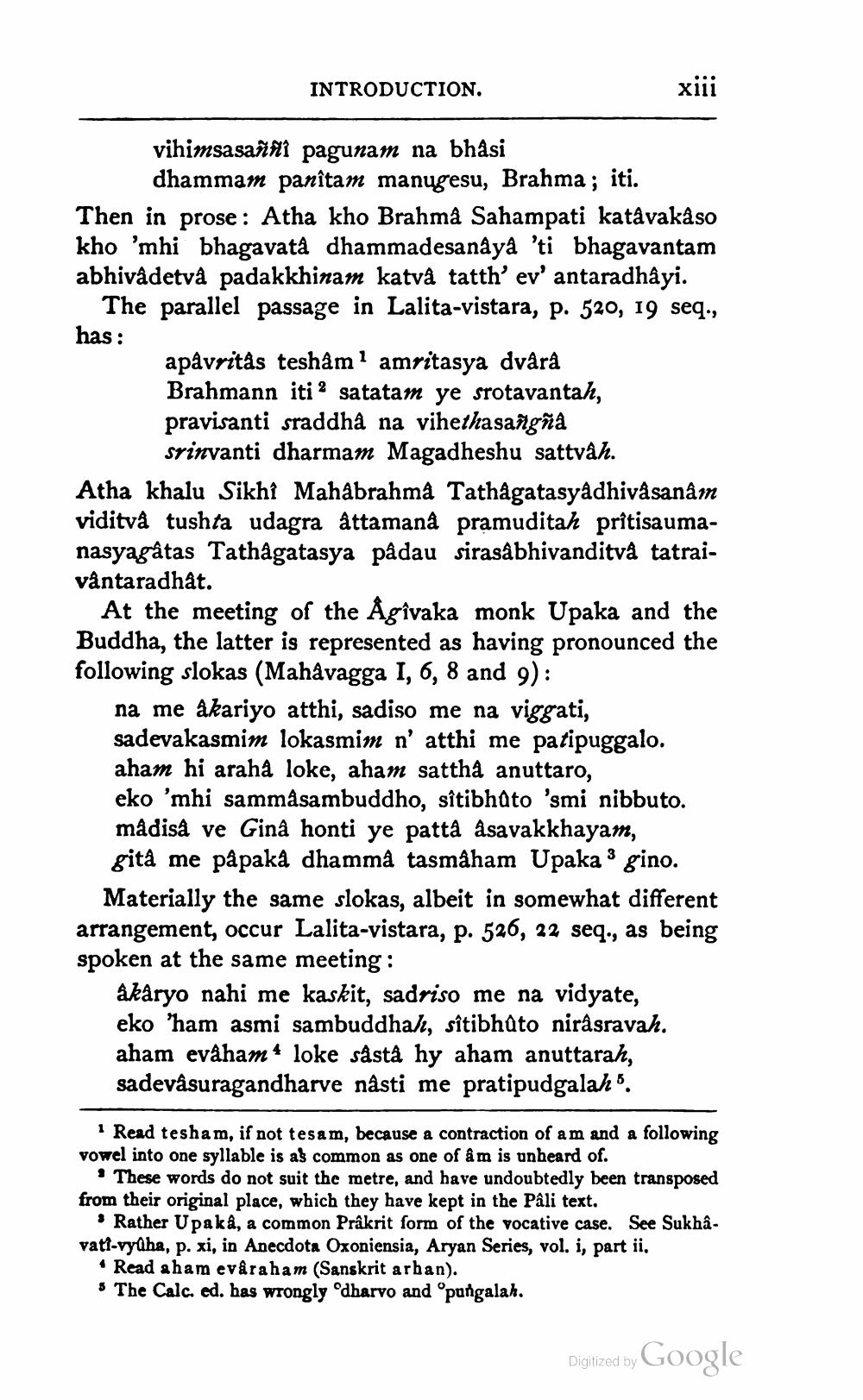________________
INTRODUCTION.
xiii
vihimsasaññi pagunam na bhasi
dhammam panîtam manugesu, Brahma ; iti. Then in prose: Atha kho Brahma Sahampati katavakaso kho 'mhi bhagavata dhammadesanäyà 'ti bhagavantam abhivadetvá padakkhinam katvà tatth' ev' antaradhảyi.
The parallel passage in Lalita-vistara, p. 520, 19 seq., has :
apavritas teshäm? amritasya dvara Brahmann iti? satatam ye srotavantah, pravisanti sraddha na vihethasañgña
srinvanti dharmam Magadheshu sattvah. Atha khalu Sikhi Mahabrahma Tathagatasyadhivåsanâm viditvà tushta udagra åttamana pramuditah pritisaumanasyagâtas Tathāgatasya padau sirasâbhivanditvå tatraivântaradhat.
At the meeting of the Ågivaka monk Upaka and the Buddha, the latter is represented as having pronounced the following slokas (Mahavagga I, 6, 8 and 9):
na me åkariyo atthi, sadiso me na viggati, sadevakasmim lokasmim n'atthi me patipuggalo. aham hi araha loke, aham satthà anuttaro, eko 'mhi sammasambuddho, sîtibhato 'smi nibbuto. mådisa ve Gina honti ye patta asavakkhayam, gitå me på paka dhamma tasmäham Upaka : gino. Materially the same slokas, albeit in somewhat different arrangement, occur Lalita-vistara, p. 526, 22 seq., as being spoken at the same meeting :
akaryo nahi me kaskit, sadriso me na vidyate, eko 'ham asmi sambuddha), sîtibhùto niràsravah. aham evåham 4 loke såstå hy aham anuttarah, sadevasuragandharve nâsti me pratipudgalah.
1 Read tesham, if not tesam, because a contraction of am and a following vowel into one syllable is a common as one of âm is unheard of.
* These words do not suit the metre, and have undoubtedly been transposed from their original place, which they have kept in the Pali text.
* Rather Upaka, a common Prakrit form of the vocative case. See Sukhavati-vyuha, p. xi, in Anecdota Oxoniensia, Aryan Series, vol. i, part ii,
• Read a ham evåraham (Sanskrit arhan). s The Calc. ed. has wrongly odharvo and pangalah.
Digitized by Google




